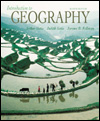 |  Introduction to Geography, 8/e Arthur Getis,
San Diego State University
Judith Getis
Jerome D. Fellmann,
University of Illinois, Urbana-Champaign
Physical Geography: Weather and Climate
Animations <a onClick="window.open('/olcweb/cgi/pluginpop.cgi?it=gif::Non-rotating::/sites/dl/free/0072367229/9464/anim_cor_rotate1.gif','popWin', 'width=238,height=272,resizable,scrollbars');" href="#"><img valign="absmiddle" height="16" width="16" border="0" src="/olcweb/styles/shared/linkicons/image.gif">Non-rotating (136.0K)</a>Non-rotating <a onClick="window.open('/olcweb/cgi/pluginpop.cgi?it=gif::Non-rotating::/sites/dl/free/0072367229/9464/anim_cor_rotate1.gif','popWin', 'width=238,height=272,resizable,scrollbars');" href="#"><img valign="absmiddle" height="16" width="16" border="0" src="/olcweb/styles/shared/linkicons/image.gif">Non-rotating (136.0K)</a>Non-rotating |  <a onClick="window.open('/olcweb/cgi/pluginpop.cgi?it=gif::Rotating::/sites/dl/free/0072367229/9464/anim_cor_rotate2.gif','popWin', 'width=238,height=272,resizable,scrollbars');" href="#"><img valign="absmiddle" height="16" width="16" border="0" src="/olcweb/styles/shared/linkicons/image.gif">Rotating (159.0K)</a>Rotating <a onClick="window.open('/olcweb/cgi/pluginpop.cgi?it=gif::Rotating::/sites/dl/free/0072367229/9464/anim_cor_rotate2.gif','popWin', 'width=238,height=272,resizable,scrollbars');" href="#"><img valign="absmiddle" height="16" width="16" border="0" src="/olcweb/styles/shared/linkicons/image.gif">Rotating (159.0K)</a>Rotating | |
Contrast in motion of objects moving over the surface
of rotating and non-rotating planets. A northward moving object maintains
a true course when viewed from two islands on the surface of a non-rotating
earth. An object with an eastward component of velocity at the equator
overshoots a target at 40N on a rotating earth. The path of the object
is deflected to the right relative to objects on the earth's surface.
|
 <a onClick="window.open('/olcweb/cgi/pluginpop.cgi?it=gif::Speed Difference::/sites/dl/free/0072367229/9464/anim_cor_spddif.gif','popWin', 'width=216,height=216,resizable,scrollbars');" href="#"><img valign="absmiddle" height="16" width="16" border="0" src="/olcweb/styles/shared/linkicons/image.gif">Speed Difference (72.0K)</a>Speed Difference <a onClick="window.open('/olcweb/cgi/pluginpop.cgi?it=gif::Speed Difference::/sites/dl/free/0072367229/9464/anim_cor_spddif.gif','popWin', 'width=216,height=216,resizable,scrollbars');" href="#"><img valign="absmiddle" height="16" width="16" border="0" src="/olcweb/styles/shared/linkicons/image.gif">Speed Difference (72.0K)</a>Speed Difference |
Every point on the earth's surface must make one complete
rotation of the planet each day. Objects on the earth's equator travel
further (and faster) than objects at higher latitudes. A site located
along the equator travels at 1675 km/hr, whereas a site along latitude
40N (or 40S) has a velocity of 1284 km/hr. It is this contrast in velocity
that results in the Coriolis Effect.
|
 <a onClick="window.open('/olcweb/cgi/pluginpop.cgi?it=gif::Animation of the Hydrologic cycle::/sites/dl/free/0072367229/9464/anim_hcycle.gif','popWin', 'width=262,height=204,resizable,scrollbars');" href="#"><img valign="absmiddle" height="16" width="16" border="0" src="/olcweb/styles/shared/linkicons/image.gif">Animation of the Hydrologic cycle (85.0K)</a>Animation of the Hydrologic cycle <a onClick="window.open('/olcweb/cgi/pluginpop.cgi?it=gif::Animation of the Hydrologic cycle::/sites/dl/free/0072367229/9464/anim_hcycle.gif','popWin', 'width=262,height=204,resizable,scrollbars');" href="#"><img valign="absmiddle" height="16" width="16" border="0" src="/olcweb/styles/shared/linkicons/image.gif">Animation of the Hydrologic cycle (85.0K)</a>Animation of the Hydrologic cycle |
A description of the steps in the cycle is available
at the University of Illinois Department
of Atmospheric Sciences website.
|
 <a onClick="window.open('/olcweb/cgi/pluginpop.cgi?it=gif::Simple Thunderstorm Animation::/sites/dl/free/0072367229/9464/anim_tstorm.gif','popWin', 'width=268,height=268,resizable,scrollbars');" href="#"><img valign="absmiddle" height="16" width="16" border="0" src="/olcweb/styles/shared/linkicons/image.gif">Simple Thunderstorm Animation (153.0K)</a>Simple Thunderstorm Animation <a onClick="window.open('/olcweb/cgi/pluginpop.cgi?it=gif::Simple Thunderstorm Animation::/sites/dl/free/0072367229/9464/anim_tstorm.gif','popWin', 'width=268,height=268,resizable,scrollbars');" href="#"><img valign="absmiddle" height="16" width="16" border="0" src="/olcweb/styles/shared/linkicons/image.gif">Simple Thunderstorm Animation (153.0K)</a>Simple Thunderstorm Animation | | The three stages in the life cycle of a thunderstorm. |
|
|



 2002 McGraw-Hill Higher Education
2002 McGraw-Hill Higher Education



